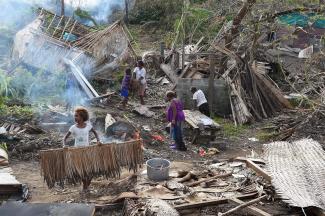Multilateral institution
Transformative potential

They make sense and should help the Fund realise its transformative potential:
- Half of the GCF resources will be allocated to adaptation, and half of that money is to be ring-fenced for least developed countries (LDCs), small island developing states (SIDSs) and Africa. This decision will help to ensure that the people who are most affected by climate change, but have done least to cause the problem, will benefit adequately from the GCF. So far, climate-finance has mostly been geared to reducing emissions in large economies. The GCF-allocation policy is a welcome corrective and its balanced approach should be enshrined in the Paris agreement.
- The Board has confirmed country ownership as the guiding governance principle. National authorities are expected to become the main liaison points of a developing country with the Fund. They will play key roles in designing, proposing and coordinating GCF-funded country programmes and facilitating multi-stakeholder participation at the national level. Boosting the capacities of national authorities has been defined a GCF priority. When dealing with the GCF, moreover, national authorities will be in a stronger position than they are in regard to the World Bank for instance. They will be able to object to projects going forward in their countries if they are not in line with country priorities. Moreover, proposals to count board votes on the basis of the financial contributions made, have so far been rejected.
- The GCF Board has made a commitment to gender-sensitive financing. As the first multilateral climate fund, it will have a gender policy and a gender action plan right from the start. The Board has already adopted both. Moreover, gender aspects are being considered in the accreditation process as well as in project decision-making and performance measurement.
- The GCF’s investment framework will take multiple criteria into account, including other dimensions of sustainable development than climate change, the needs of the most-affected population groups and contributions to long-term change. It is appropriate to put large-scale investments into context this way.
These decisions matter very much because the GCF will soon be one of the most important multilateral finance institutions (see main essay: http://www.dandc.eu/en/article/green-climate-fund-aspires-be-fully-operational-ahead-climate-summit-paris-december). The decision to set it up was taken by the UN climate conference in Copenhagen in 2009 when the advanced nations pledged to make an annual $ 100 billion available in support of developing countries that must mitigate global warming and adapt to the phenomenon. Some of that money will come in the form of grants from rich-country governments, and some of it will be private-sector investments. It has not been decided yet whether the climate summit in Paris will define financial targets that rich nations must meet. (ls)








